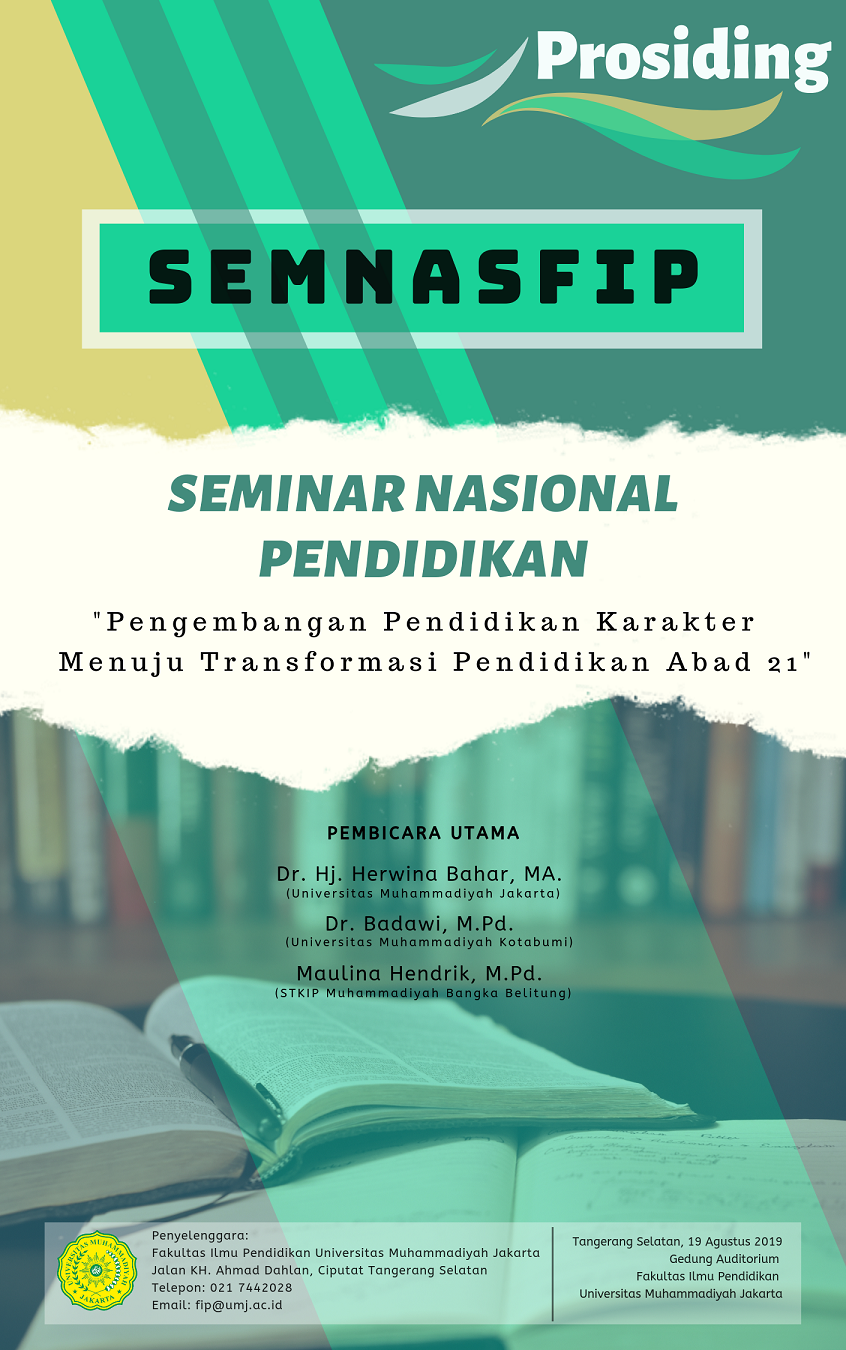INDONESIAN FOLKLORE ANIMATION AS ENGLISH LEARNING MEDIA AND STUDENTS’ CHARACTER EDUCATION FOR PRIMARY SCHOOL
Abstract
This paper focuses on an exploration of Indonesian folklore animation in English version as a medium for learning English as well as students’ character education. In the era of industrial revolution 4.0, the use of animation media as an alternative solution to the challenges of the times in integrating technological progress with learning process. This study used descriptive qualitative research methods to examine the Indonesian folklore in English version. The findings of the research are 1). Indonesian folklore animation is expected to be able to teach English skills such as vocabulary, structure, listening skills, and speaking skills; 2) it is expected to be able to become a character education media for children in introducing the values of local wisdom. Indonesian folkore animation not only helps students in transferring folklore content that is of noble values but also they are expected to be able to obtain a more meaningful English learning process.References
Aládé, Samuel & Fọlárànmí, Stephen & Ọdẹ́jóbí, Odetunji. (2015). A Model for Animation of Yorùbá Folktale Narratives. African Journal of Computing & ICT. 8. 113-120. https://www.researchgate.net/publication/308352527_A_Model_for_Animation_of_Yoruba_Folktale_Narratives
Azizah, Aida & Nurkamto, Joko & Suwandi, Sarwiji & Rohmadi, Muhammad. (2017). Building Students' Character Through Fairytale Textbooks. 10.2991/aecon-17.2017.3.
Bin Mat Omar, Mohd Amir & Ishak, Md. (2011). Understanding Culture Through Animation: From the World to Malaysia. Malaysian Journal of Media Studies. 13. 1-9. https://www.researchgate.net/publication/254258356_Understanding_Culture_Through_Animation_From_the_World_to_Malaysia
Bunanta, Murti. (2017). Indonesian Folktales (World Folklore Series). https://aasmedia.press/med-65260/B001NEINWY
Blyznyuk ,Tetyana dan Nafalska, Karolina. (2017). Using of Folk Art to Enhance Learning at English Lessons in Primary School. Journal of Vasyl Stefanyk Precarpathian National University http://jpnu.pu.if.ua Vol. 4, No. 1 (2017), 155-161.
Lwin, Soe Marlar. (2015). Using Folktales for Language Teaching. The English Teacher, XLIV(2), 74-83. English Language and Literature Academic Group. National Institute of Education.Nanyang.
Nassaji, Hossein. (2015). Qualitative and descriptive research: Data type versus data analysis. Language Teaching Research. 19. 129-132. 10.1177/1362168815572747.
http://.ltr.sagepub.com
Otten, Evelyn Holt. (2002). Developing Character through Literature: A Teacher's Resource Book. ERIC Clearinghouse on Reading, English, and Communication, Bloomington, IN.; Family Learning Association, Bloomington.
Sukmawan, Sony dan Setyowati, Lestari. (2017). Environmental Messages as Found in Indonesian Folklore and Its Relation to Foreign Language Classroom. Arab World English Journal (AWEJ) Volume.8 Number.1 March, 2017 Pp. 298-308. ISSN: 2229-9327. DOI. https://dx.doi.org/10.24093/awej/vol8no1.21
Spirovska Tevdovska, Elena. (2016). Literature in ELT Setting: Students Attitudes and Preferences Towards Literary Texts. Procedia - Social and Behavioral Sciences. 232. 161-169. 10.1016/j.sbspro.2016.10.041.https://www.ef.co.id/englishfirst/efblog/folklore-indonesia-terbaik/

